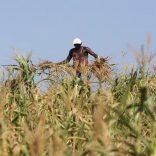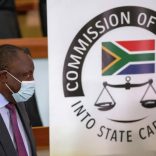Malawi activates grain export restrictions as 4 million people face hunger
It’s a hard knock life for SADC youth entrepreneurs

Young people below the age of 35 constitute two-thirds of the SADC population. It is against this background that youth development and empowerment has become the core of SADC’s Revised Regional Indicative Strategic Development Plan (RISDP) 2005-2020.
The Southern African Development Community (SADC) Secretariat states that youth empowerment is closely related to the SADC’s strategic objective to enhance human capabilities and utilisation. The objective also aims at reducing vulnerability, eradicating poverty and enhancing the wellbeing of SADC citizens.
So serious are the SADC member states that they have incorporated the youth agenda into the bloc’s 38th 2018/9 Summit theme: “Promoting Infrastructure Development and Youth Empowerment for Sustainable Development”.
While young people are seen as the key population in the sustainability of SADC programmes, member states appear to be struggling in the implementation of youth empowerment programmes due to financial challenges, effective follow-up systems after funding, a lack of business mentorship and accountability.
In Mauritius, Tanzania, Zambia and Mozambique, funding has been a stumbling block to youth empowerment, and the member states need to prioritise youth projects and establish effective funding mechanism as well as mentorship programmes in order to attain RISDP 2020.
Mauritius has vast opportunities for young people to explore, particularly in the tourism sector.
That country’s decision to fund youth venturing into tourism and mining sectors has made such projects viable.
However, a representative from the National Youth Council of Mauritius, Poordel Ridhwaan expressed concerns to The Southern Times that the government is only funding small projects.
“We are hoping that very soon funding for bigger projects may be available,” said Ridhwaan.
According to the Tanzania Youth Coalition, Tanzania has a potential of increasing organic farming exports, as well as improving the country’s agri-business in general, which could create many job opportunities for the youth and contribute positively to the country’s Gross Domestic Product.
However, youth entrepreneurial programmes in Tanzania are not receiving enough funding from the government.
Similarly, in Zambia, the government does not have a funding mechanism for young people and has no resources to adequately fund youths in need of such support. Brian Chipasha from the National Youth Council of Zambia believes that Zambia’s youth can positively contribute to their country’s economy if granted an opportunity.
“Our young people have brilliant ideas, but our major setback is financial support.
If the young people go to banks to apply for loans, the banks are requesting collateral security and our youth do not have that,” Chipasha stressed.
Chipasha is, however, optimistic of the future adding that the government is working on creating a mechanism to ensure the country’s youth has access to funding.
“We are hoping that they establish the platforms as soon as possible,” Chipasha concluded.
Information from the National Youth Council of Zambia shows that the country’s government sets aside US$2 million annually to cater for 600 youth each year. Before 2012, the funding for youth programmes was below 60% of the US$2 million but has been increased to cater for more youth.
However, of the 600 youth accessing the fund, the success rate is 15.7%. The low success rate is blamed on a lack of mentorship.
“There are a host of reasons why the success rate is very low and these include lack of mentorship and market linkages among the youth, as well as lack of a follow-up system when the funding is allocated,” said Chipasha.
The situation is no different in Mozambique, where the youth can exploit opportunities in sectors like infrastructure development and communication.
The country’s youth face the same grim reality of not being able to access funding.
Josemir Taimo of the National Youth Council of Mozambique feels that since funding is a common problem in the region, SADC member states need to establish a body responsible for facilitating regional cooperation and coordination among the region’s youth.
One size does not fit all
Some SADC governments avail money to fund youth-initiated businesses. The problem is, however, not all young people in these countries have access to such funding. Countries like Angola, Zimbabwe and South Africa, have the funding mechanisms in place, but youths residing in rural parts of these countries struggle to access such assistance.
Claudio de Agosto, the chairperson of the Angolan National Youth Council, explains that Angolan funding for youth projects is meeting the demand.
It is unfortunate that the majority of the people accessing the fund are those in the urban areas mainly because the rural population does not have access to the information about the funding and the procedures to access the fund.
Agosto told The Southern Times that the majority of the youth who have access to the funding are venturing in mining, agriculture, oil and information technology services.
The issue of centralising youth projects, which is affecting Angola, can be resolved by embarking on more outreach programs and Botswana is leading by example.
In Botswana, the National Youth Council have youth-friendly corners in rural areas where young people access information about youth fund, health and mentorship so that they are not left behind.
In South Africa, the National Youth Development Agency (NYDA) provides grants for youth projects and the organisation works hand in hand with financial institutions in running youth-centred loan programmes.
“On these grants, we have an effective follow-up mechanism where the youth are required to report on progress made on their projects,” NYDA Chief Executive Officer, Waseem Carrim.
NYDA has supported 2,245 young entrepreneurs over the three years the grant programme has been running. Carrim highlighted that each entrepreneur receives between R10,000 and R100,000 in funding, depending on their proposals.
Similarly, Zimbabwe has an Empowerment Bank that prioritises youth projects.
The bank was launched July 2018, despite prevailing economic hardships to give the youth access to financing.
“The major challenges we have been facing are scattered efforts which stagnated youth projects in the past. However, having learnt from that experience, we now have the youth power bank, which was launched by President Emmerson Mnangagwa. The bank is a platform for project funding for young people. The platform is severely monitored to ensure that the right people are given the funding,” said Juliana Kariri, a representative of the Zimbabwe Youth Council.
While the funding and follow-up structures are effective in these countries, more needs to be done to reach less developed communities and rural areas.
The SADC Secretariat has been spearheading youth programmes to create a platform where young people across the region can exchange ideas and learn from each other.
Such events include the SADC Youth Forum, which was held in Windhoek, Namibia last December. Last year, SADC Executive Secretary Stergomena Lawrence Tax encouraged member states to do more youth-focused and youth-led development programmes for meaningful transformation and sustainable development of the African continent. She preached the message during the 17th Africa Scout Conference in Harare, on 10 September.
By Sharon Kavhu












Leave a Reply
Be the First to Comment!
You must be logged in to post a comment.
You must be logged in to post a comment.